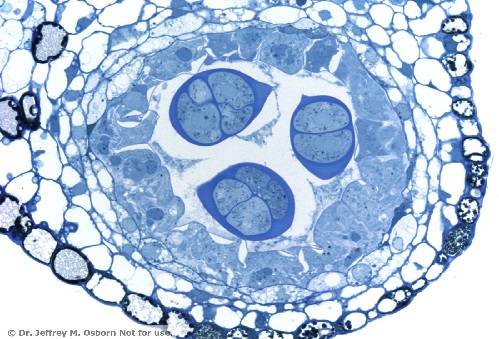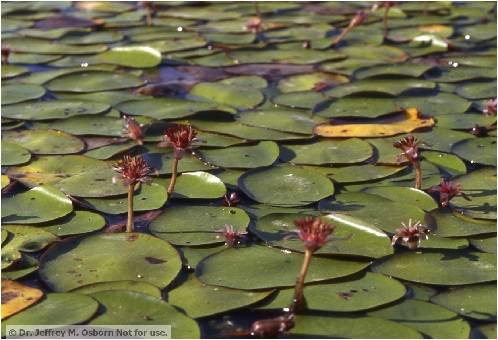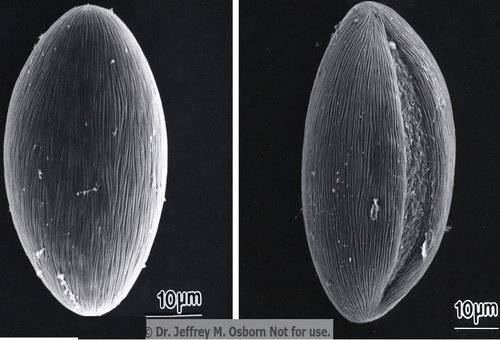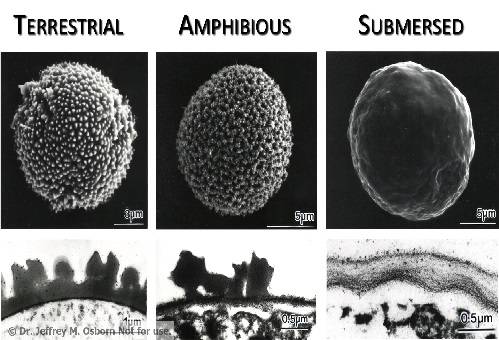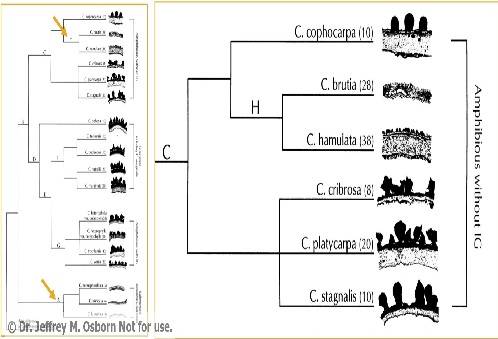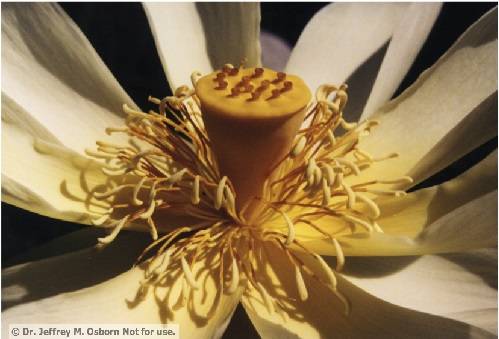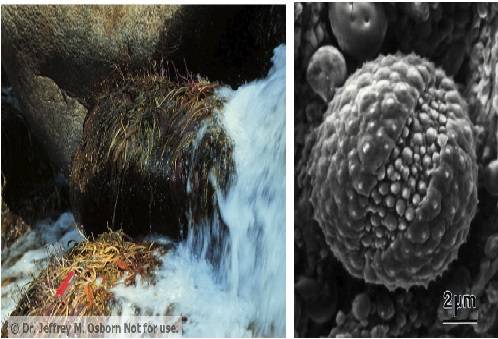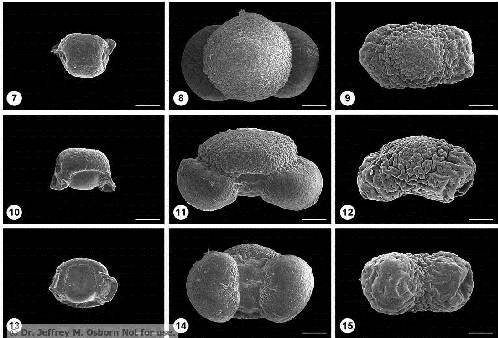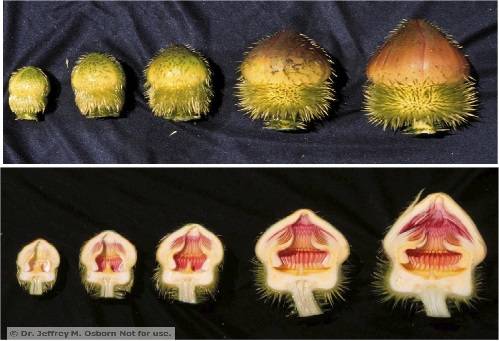Taylor, M. L. and J. M. Osborn. 2006. Pollen Ontogeny in Brasenia (Cabombaceae, Nymphaeales). American Journal of Botany 93: 344-356. (Including color cover of journal issue for March 2006)
Abstract
Brasenia is a monotypic genus sporadically distributed throughout the Americas, Asia, Australia, and Africa. It is one of eight genera that comprise the two families of Nymphaeales, or water lilies: Cabombaceae (Brasenia, Cabomba) and Nymphaeaceae (Victoria, Euryale, Nymphaea, Ondinea, Barclaya, Nuphar). Evidence from a range of studies indicates that Nymphaeales are among the most primitive angiosperms. Despite their phylogenetic utility, pollen developmental characters are not well known in Brasenia. This paper is the first to describe the complete pollen developmental sequence in Brasenia schreberi. Anthers at the microspore mother cell, tetrad, free microspore, and mature pollen grain stages were studied using combined scanning electron, transmission electron, and light microscopy. Both tetragonal and decussate tetrads have been identified in Brasenia, indicating successive microsporogenesis. The exine is tectate-columellate. The tetrad stage proceeds rapidly, and the infratectal columellae are the first exine elements to form. Development of the tectum and the foot layer is initiated later during the tetrad stage, with the tectum forming discontinuously. The endexine lamellae form during the free microspore stage, and their development varies in the apertural and non-apertural regions of the pollen wall. Degradation of the secretory tapetum also occurs during the free microspore stage. Unlike other water lilies, Brasenia is wind pollinated, and several pollen characters appear to be correlated with this pollination syndrome. The adaptive significance of these characters, in contrast to those of the fly-pollinated genus Cabomba has been considered. Brasenia does not produce pollenkitt nor develop tectal microchannels as does Cabomba. Instead, the discontinuity of the tectum reduces the amount of sporopollenin in the wall, which may allow for more effective wind dispersal. The importance of reassessing palynological characters in light of new ontogenetic data and the phylogenetic implications of this reevaluation are also discussed.
Keywords:
Anther; Brasenia; Cabombaceae; development; Nymphaeales; ontogeny; pollen; ultrastructure.



